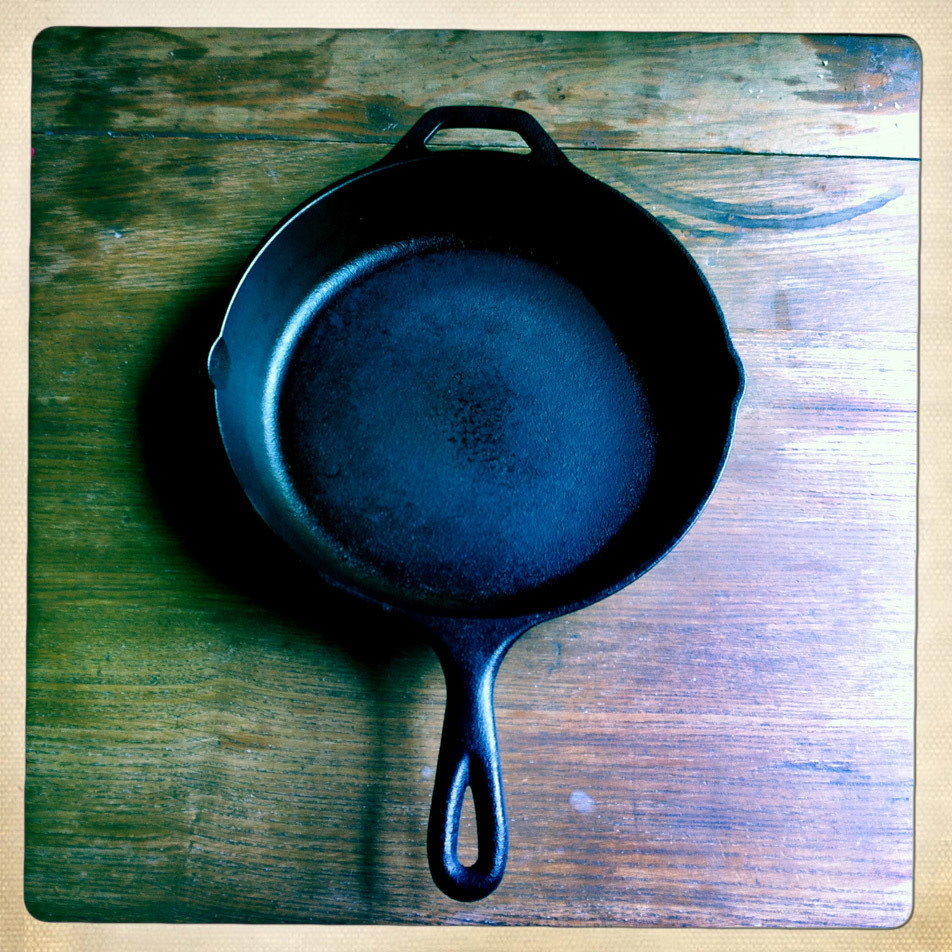Come Back to Cast-Iron Cookware

Cast-iron is a classic due for a comeback. Even a 10" skillet like this is heavy but worth its weight – lifting it will make you strong, and cooking in it will literally add iron to your diet. Sizes range from 6 to 12" diameter, as well as reversible griddle versions for one or two burners.
Image: Kristin Belz
You may have a cast-iron pan. And it may be a cast-off – inherited from some older relative and forgotten about as you've added to your collection of pristine, gourmet-worthy cooking implements over the years. But the cast-iron pan deserves to be brought back to the front burner. It's healthy, economical (read: inexpensive and durable), and generally an old-fashioned, no frills high-performer.
Cast-iron is also heavy enough that you might use cooking with it as a replacement for reps at the gym, though we don't recommend that. But you do get used to the weight-lifting aspect of cast-iron cooking, and it's one of the many side benefits you'll realize as soon as a cast-iron skillet becomes your go-to pan. Leaving it on the stove or a highly accessible shelf (instead of shoving it to the back of the cupboard like mine was for years) makes it a lot easier to use (I say this from firsthand experience).
Benefits of cast-iron:
- Conducts and retains heat well.
- Is the original, natural non-stick surface.
- Can go in the oven.
- Super durable.
- Adds healthy iron to the food cooked in it (especially important for anyone anemic or low-iron). Literally, your cast-iron cooking vessel is an iron supplement. Depending on the food and cooking time, cooking in a cast-iron pan can add significant iron content. Example: iron in a serving of spaghetti sauce cooked in cast-iron increased 7 mg (from .35 mg/100g to 7.4 mg/100g). For many of us, this is nearly the entire RDA for iron: 8 mg/day for men and post-menopausal women (18 mg/day for pre-menopausal women). And it's more than twice the iron in a 1 cup serving of quinoa (which is a not-too shabby 2.8 mg).
- Pancakes (including oven baked Dutch babies or Austrian pancakes), cornbread and biscuits
- Grilled cheese
- Pizza
- Burgers
- Eggs
- Asparagus, greens and other quick-cooking vegetables
- Clean (by hand) soon after you’ve used it.
- Don’t let it sit in water.
- Use soap or not – either way seems to be OK; just don’t overscrub (or you’ll wear away the magical “seasoned” coating that comes with proper, frequent use.
- Dry thoroughly soon after washing – towel dry and then put it on a low-heat burner for a couple minutes to eek out all the moisture and completely avoid rusting!
- Optional: rub with a touch of oil (about a quarter-sized dab rubbed in with a paper towel) if you want to seal in the seasoning, and heat another minute on the low burner.
- Thrift stores are a good source, though your find might take some refinement and seasoning before you can use it.
- Lodge Manufacturing is the only company in the U.S. still making cast-iron; they're sold at Fred Meyer, Kitchen Kaboodle, Williams-Sonoma, Mirador Community Store and others. Prices tend to be about $13 (6" skillet) to about $40 (12" skillet).
- Williams-Sonoma also carries a lightweight, sleekly styled Japanese import – Komin Fry Pan, about $80 in the 2 lbs, 9 1/2 inch size.) Antique dealers sometimes have Griswold or Wagner Ware, which were high-quality brands popular in the first half of the 20th century, before cast-iron fell out of favor and was supplanted by teflon and newer non-stick pans.
